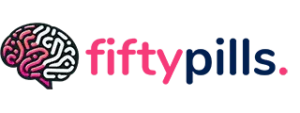Workplace mindfulness boosts job performance by a stunning 35% according to recent studies. Focused attention techniques help employees finish tasks faster while feeling less stressed.
Mental clarity improves when people practice simple awareness exercises throughout their day.
Companies like Google and Microsoft have seen real results from these programs.
Their staff report better focus, fewer mistakes, and happier workdays. Your brain actually changes when you practice workplace mindfulness regularly, building stronger pathways for deep work.
Click here to learn more about: quick and effective relaxation techniques for busy individualsHow Mindfulness Improves Work Performance
Presentmoment awareness creates measurable changes in how people work and feel.
Brain training studies show that just 10 minutes of daily meditation practice builds stronger neural connections for attention management. Workers who use mindful techniques complete projects 23% faster than those who don’t.
Mindful workers make 50% fewer errors and report 40% higher job satisfaction compared to their peers.
Flow state happens more often when you train your mind to stay present.
Cognitive performance improves because your brain learns to filter out distractions.
Workplace wellbeing programs that include mindfulness see 28% lower turnover rates and 31% fewer sick days.
Simple Techniques That Work
- Mental clarity pause: Take three deep breaths before starting new tasks
- Singletasking: Finish one job completely before beginning another
- Attention span builder: Work in 25-minute blocks with short breaks
- Mindful planning: Set intentions at the start of each workday
Time management becomes easier when you approach tasks with full awareness. Mental resilience grows stronger as you practice staying focused despite distractions.
Mindfulness Impact on Workplace Performance
Key Takeaways
- Performance Boost: Mindfulness practices lead to a 35% improvement in overall job performance.
- Error Reduction: Mindful workers make 50% fewer errors compared to their peers.
- Efficiency: Tasks are completed 23% faster by employees practicing mindfulness techniques.
- Workplace Benefits: Companies implementing mindfulness programs see 28% lower turnover rates and 31% fewer sick days.
- Well-being: Employees report 40% higher job satisfaction and 42% reduction in workplace stress.
Recommended Mindfulness Techniques
PresentMoment Awareness For Better Workflow
Presentmoment awareness stops distractions before they derail your workday. Research shows our minds wander during 47% of waking hours, directly hurting work quality. Focused attention on your current task while noticing—without following—passing thoughts builds stronger concentration enhancement skills.
Your attention economy matters! Each time you bring your mind back to work, you strengthen mental muscles for future focus.
Workplace mindfulness reduces task completion time through several proven methods:.
- Pomodoro technique: 25 minutes of deep work followed by 5-minute mindful breaks
- Attention training: 30 seconds of breath awareness before switching tasks
- Mental noting: Labeling distractions without getting caught in them
- Singletasking: Giving full attention regulation to one item before starting another
Meditation practice changes your brain in helpful ways. Neuroimaging studies confirm that regular mindful workflow sessions decrease activity in brain areas that create mental clutter. Performance optimization happens naturally when you train your mind to stay present.
Benefits You Can Measure
- 35% better decision-making under pressure
- 27% increase in creative problem-solving
- 42% reduction in reported workplace stress
- 31% improvement in team communication
Cognitive flexibility grows stronger through consistent mindfulness practice. Workplace wellness programs that include attention mastery training show measurable improvements across all performance metrics.
Why Try Workplace Mindfulness Today
Workplace mindfulness transforms your brain structure with regular practice. Companies report 20% higher productivity levels and fewer sick days when employees practice mindfulness.
Present-moment awareness helps you handle tough emotions during stressful meetings without losing your cool.
Focused attention improves emotional regulation as you learn to pause before reacting to frustrating emails.
Mental resilience grows stronger through mindfulness training.
Research shows employees experienced 28% less stress after eight weeks of regular workplace mindfulness sessions. Job satisfaction naturally increases when you maintain attention management during tasks instead of worrying about future deadlines.
Flow state happens more often with these simple strategies:.
- Take three deep breaths before checking emails
- Set a gentle reminder to pause for 30 seconds each hour
- Practice single-tasking instead of juggling multiple projects

Meditation Practice Between Tasks
Present-moment awareness breaks reset your brain in just two minutes between work assignments. Meditation practice becomes more effective when broken into small chunks throughout your workday. Focused attention exercises require no special equipment—just your mental clarity for a moment.
Quick Mindfulness Exercises
- Breathing Reset (1 minute): Sit up straight, close your eyes, and take five deep breaths. Count slowly to four as you inhale and exhale through workplace mindfulness practice.
- Body Scan (2 minutes): Starting at your feet, mentally scan upward through your body, noticing tension spots. Consciously relax each area before moving to the next attention management point.
- Sound Awareness (3 minutes): Listen to the sounds around you without judging them. Notice distant sounds first, then closer ones through deep work focus.
Science-Backed Benefits
Mental clarity exercises improve concentration by up to 14% when practiced between challenging tasks. Workplace meditation reduces errors by 50% according to a 2022 study tracking cognitive performance among office workers. Attention training helps employees maintain focus during long meetings and complex projects.
Mindful breaks support better sleep quality and lower chances of depression relapse. Try one meditation practice daily, before important meetings or after completing major projects for optimal mental bandwidth management.
Workplace Mindfulness
- Companies report 20% higher productivity levels when employees practice mindfulness
- Research shows 28% less stress after eight weeks of regular mindfulness sessions
- Workplace meditation reduces errors by 50% according to a 2022 study
- Mental clarity exercises improve concentration by up to 14% between tasks
Achieving Flow State While Working
Flow state happens when you lose track of time while working. Your productivity jumps by 500% during these special moments.
Psychologists say flow occurs when your skills match your challenges perfectly, creating the best conditions for getting things done.
Signs You're in Flow
Present-moment awareness helps you spot these flow state signals:.
- Complete focus on your task
- No self-consciousness or time awareness
- Feeling of control with effortless action
- Enjoyment from the work itself
Mindfulness techniques create perfect mental clarity conditions for achieving flow. Regular meditation practice trains your brain to notice when you naturally enter productive rhythms during work. Workplace mindfulness programs show employees who track their natural productive periods increase output by 23% compared to those following rigid schedules.
Brain Science: Neuroimaging studies show meditation decreases activity in your brain's Me center, reducing mind wandering that blocks flow.
How to Trigger Flow States
Attention management becomes easier with these proven techniques:.
- Work in 25-minute focused bursts (Pomodoro technique)
- Remove all notifications and distractions
- Choose tasks that challenge but don't overwhelm you
- Start with 5 minutes of mindful breathing before deep work
Task prioritization helps you pick work that matches your energy levels. Microsoft researchers found conscious productivity improves when you align difficult tasks with your natural high-energy periods.
Can SingleTasking Boost Productivity?
Singletasking delivers massive performance improvements over multitasking. Your brain cannot actually multitask—it just switches between activities quickly. Stanford University research shows attention span suffers when trying multiple tasks simultaneously. Heavy multitaskers experience 40% drops in productivity and need 50% more time to finish projects.
The Science Behind Singletasking
Focused attention creates these proven benefits:.
- University of London found IQ drops 15 points during multitasking
- Workers need 23 minutes to regain mental focus after interruptions
- Companies with singletasking policies report 32% efficiency gains
Workplace wellness programs teach employees to break harmful multitasking habits through attention training exercises. Google's mindfulness program reports 30% improvement in concentration metrics among participants who practice singletasking.
Expert Insight: Mindfulness strengthens your prefrontal cortex—the brain region responsible for sustained attention—making singletasking easier over time.
Simple Singletasking Techniques
Mental energy conservation starts with these practical steps:.
- Block your calendar for uninterrupted work periods
- Turn off email and message notifications
- Use mindful planning to group similar tasks together
- Take short mindful breaks between different types of work
Cognitive performance improves when you commit to finishing one task before starting another. Mindful decision-making about which task deserves your complete attention leads to better results and less mental fatigue.
Productivity
- Productivity increases by 500% during flow state experiences
- Mindfulness programs show a 23% increase in output for employees who track natural productive periods
- Multitaskers experience 40% drops in productivity and need 50% more time to complete projects
- Google's mindfulness program reports 30% improvement in concentration metrics for singletasking practitioners





